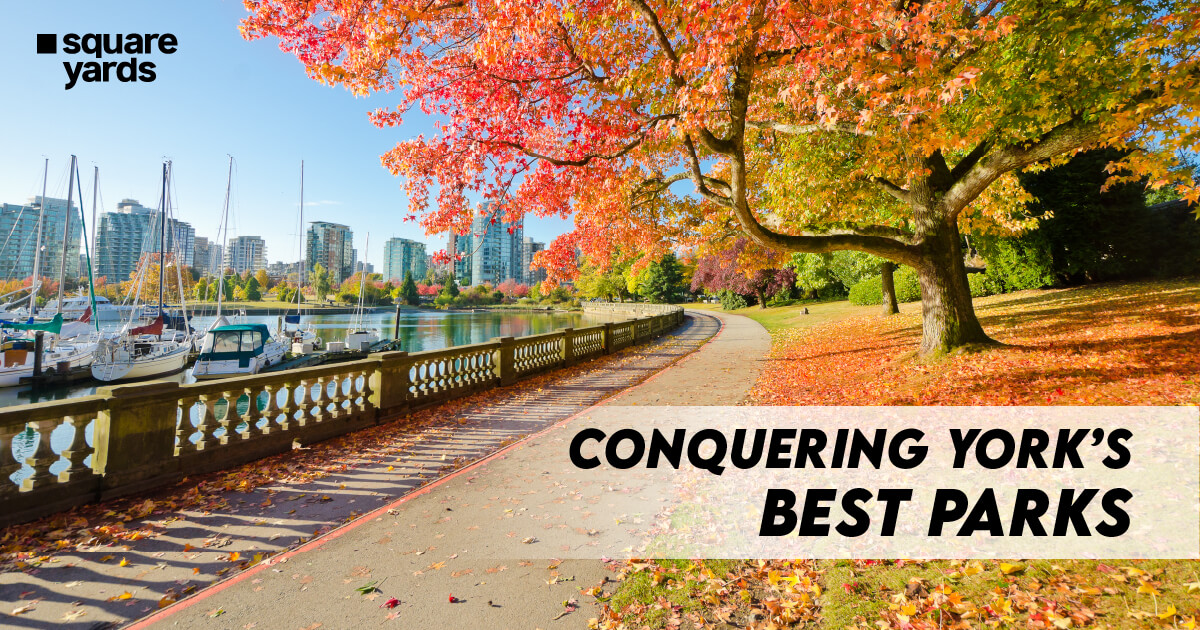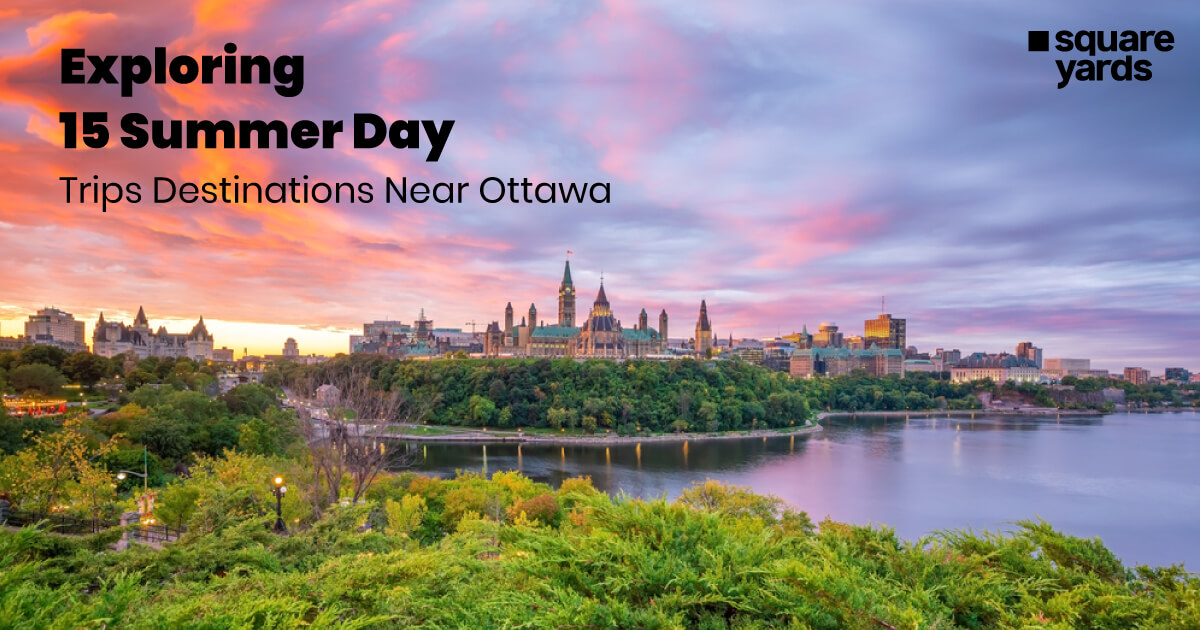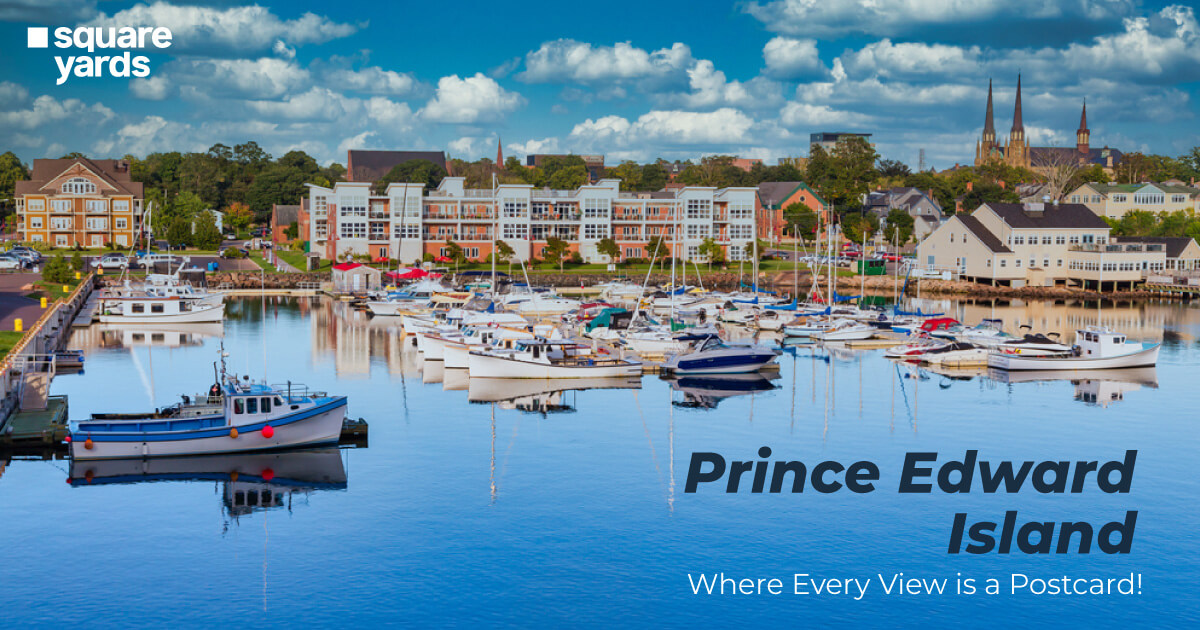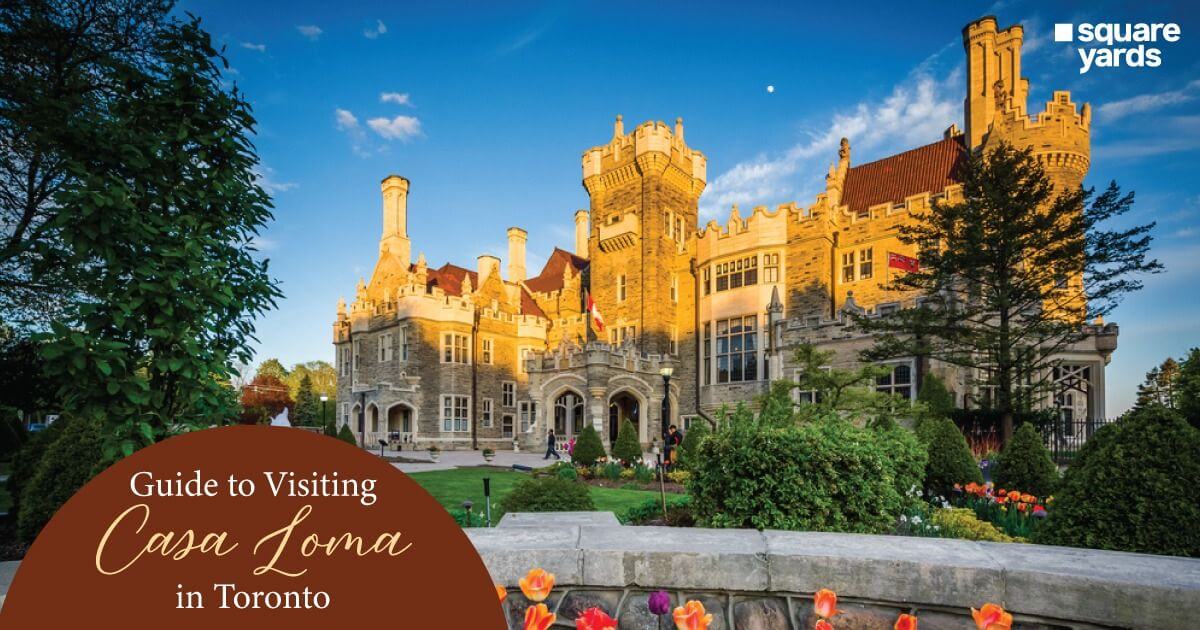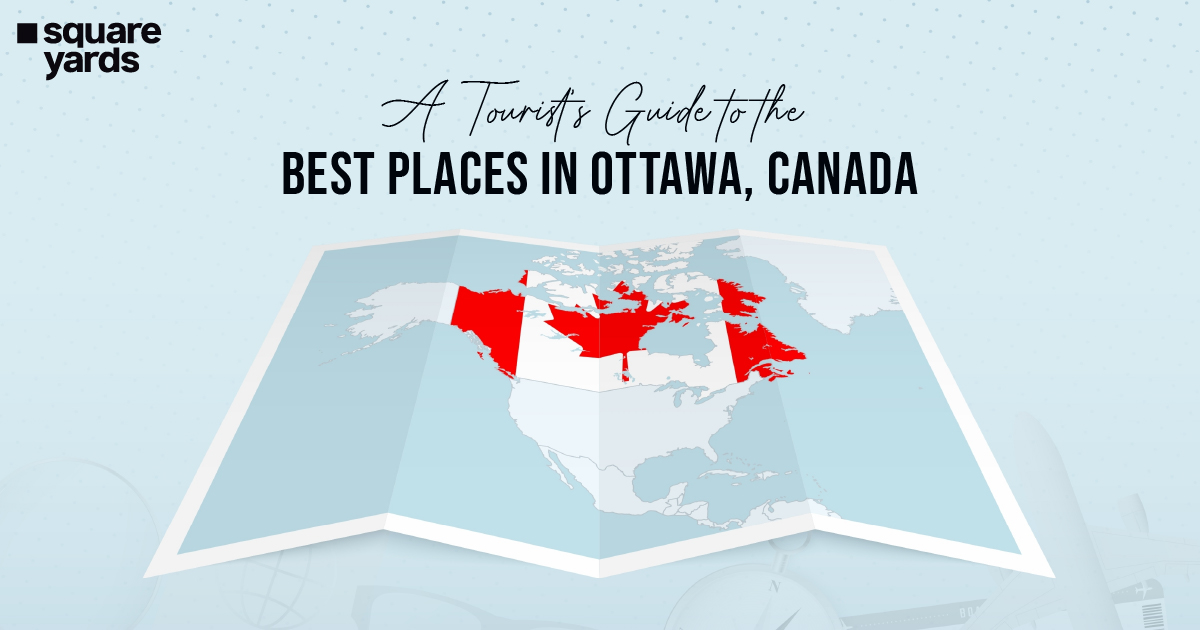Jasper National Park is the largest national park in the Canadian Rockies. It is a place where the wild truly comes to life. Far beyond the photos and travel brochures, this park is wild in every sense of the word. Its residents include grizzly bears, moose, and elk with its rugged mountain peaks, glacial-fed lakes, dense forests, and abundant wildlife. While many people might think of a trip to Jasper as a series of photo ops and sightseeing stops, the truth is that this park offers much more than what meets the eye.
Spanning 11,228 sq km, Jasper National Park in Alberta is Canada’s second-largest dark sky preserve. This huge, breath-taking landscape is divided into five unique regions, each offering beauty. While the park is best known for its expansive network of hiking trails, it also provides a variety of exceptional experiences throughout the year, making it a must-visit destination for adventurers of all ages.
But how can you go beyond the typical tourist route and truly appreciate everything Jasper offers? That is why this blog is here. We will not just tell you where to go or what to see, but we will also show you how to experience Jasper like a true adventurer. From hiking along hidden trails and canoeing across lakes to stargazing under one of the darkest skies in the world, Jasper is a place where the wonders of nature and the thrill of adventure intertwine in unforgettable ways. So, let the adventure begin!
Jasper’s Rich History and Vibrant Culture
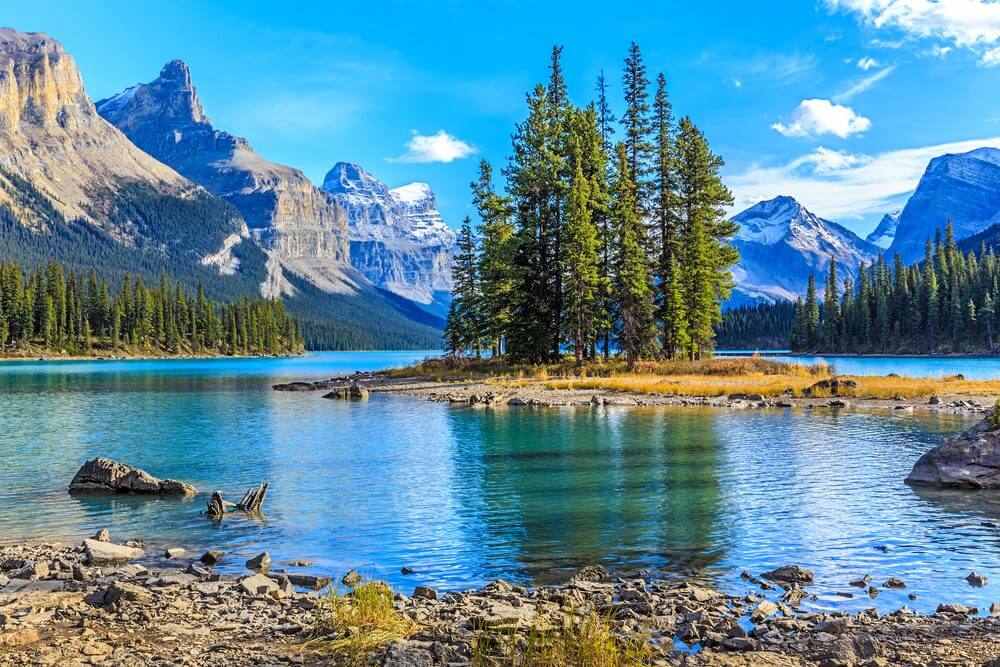
The current Municipality of Jasper is located on Treaty 6 and 8 Territories, historically home to various Indigenous Peoples who used the land as a gathering place, travel route, and home. Today, over 26 Indigenous groups remain connected to the area. The first recorded European to visit the Athabasca Valley was Surveyor David Thompson in 1810. Indigenous Peoples continued to care for the land during this time, sharing their knowledge with European explorers and fur traders. However, when the Jasper Park Forest Reserve was established in 1907, Indigenous Peoples were forcibly removed, and the land was repurposed for European settlers. Many natural features were then renamed with colonial names.
Jasper’s Top 10 Scenic Wonders and Natural Features
In Jasper National Park, nature is stunning at every turn. This wild landscape is filled with breathtaking sights, from towering peaks and turquoise lakes to hidden valleys and ancient glaciers.
Rocky Mountains
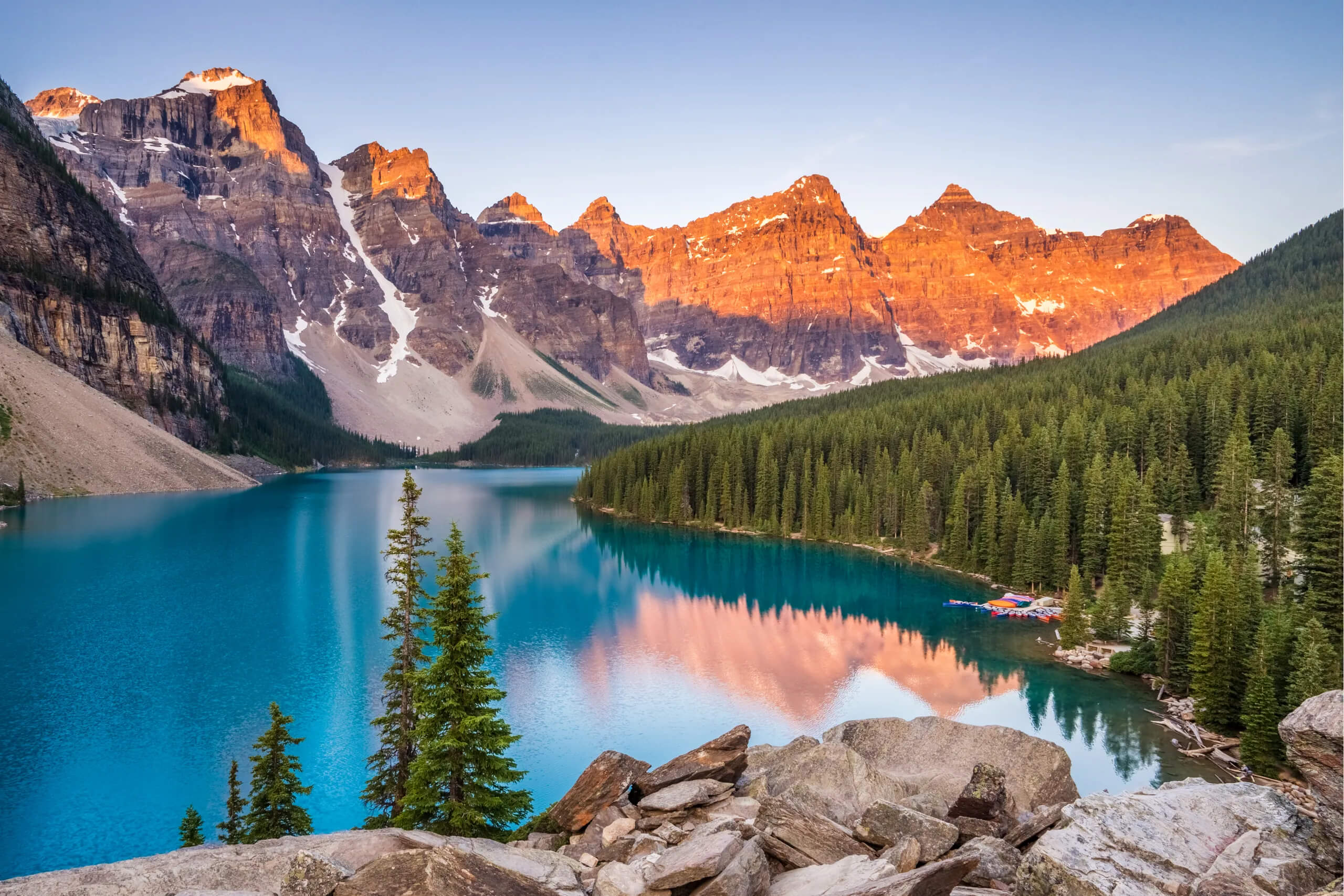
More than just a striking feature, the Rockies are the soul of Jasper National Park, drawing visitors with a mix of peaceful serenity and exciting exploration. These impressive peaks create stunning views that will leave visitors in awe. The Rockies are an integral part of Jasper’s character, with hiking trails weaving through alpine meadows and dense forests, offering breath-taking perspectives of the rugged mountains. Rock climbers are also drawn to the area’s challenging terrain, adding an element of adventure to the park’s beauty. Recognised as a UNESCO World Heritage Site, Jasper showcases the Rockies’ immense influence on its natural beauty and the wide range of outdoor activities it supports. The park is part of the Canadian Rocky Mountain Parks, which include Banff, Jasper, Kootenay, Yoho, and the provincial parks of Mount Robson, Mount Assiniboine, and Hamber.
Maligne Canyon
Maligne Canyon is one of the standout attractions in Jasper National Park, offering stunning sights that make it a must-see. Renowned for its striking turquoise waters winding through dramatic cliffs, the canyon offers an awe-inspiring landscape that captivates all who visit. Hikers have a variety of trails to choose from, including the easy Maligne Canyon Trail, which stretches 3.7 km, and the more challenging 2.7 km Maligne Canyon Loop Trail. Both routes offer great bird-watching opportunities amidst the beautiful landscape. For an added treat, you can enjoy the famous views while dining at the Maligne Canyon Wilderness Kitchen, where the smokehouse-inspired menu adds to the experience.
Maligne Lake
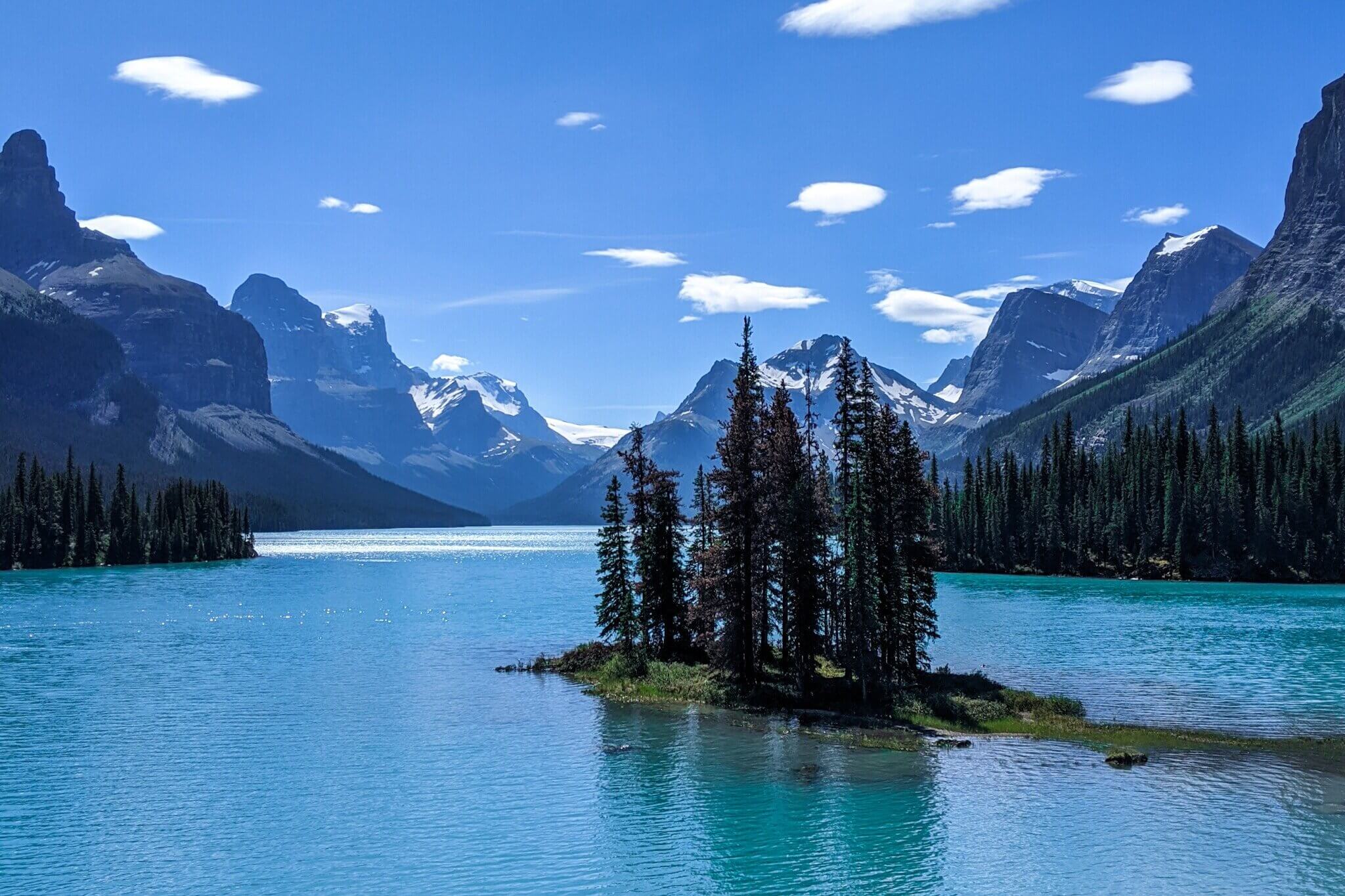
Maligne Lake, popular as the crown jewel of Jasper National Park, attracts visitors with its stunning turquoise waters. It is home to what many call the “Best Boat Cruise in Canada,” where visitors are treated to incredible views of surrounding mountains and landscapes. Beyond the famous cruise, Maligne Lake is a paradise for outdoor lovers. Whether you are paddling across its clear waters or hiking along its shores, the beauty of Jasper’s wilderness is always within reach. Maligne Lake is a true gem of the Canadian Rockies.
Lake Louise
With its stunning glacial-fed waters, Lake Louise perfectly captures the untouched beauty of the surrounding alpine landscape. The deep blue lake, framed by towering mountains and forests, offers a peaceful and awe-inspiring sight that feels almost otherworldly. It is hard not to be mesmerised by the stillness of the water, which reflects the majestic peaks like a mirror, creating a sense of calm and wonder that stays with you long after you leave. Every glance around Lake Louise reminds you of nature’s incredible power to humble and inspire.
Pyramid Lake
Pyramid Lake is an alpine lake that absorbs visitors of nature’s beauty. Its crystal-clear waters mirror the stunning surroundings, creating a postcard-worthy scene. A gentle 2-km trail circles the lakeshore, offering an easy, scenic walk through serene wilderness. A charming wooden bridge leads to a small island in the lake, perfect for quiet reflection or exploration. Whether strolling along the trail, enjoying the views from the bridge, or relaxing by the water, Pyramid Lake offers a peaceful escape, inviting you to slow down and soak in Jasper’s natural beauty.
Mount Edith Cavell
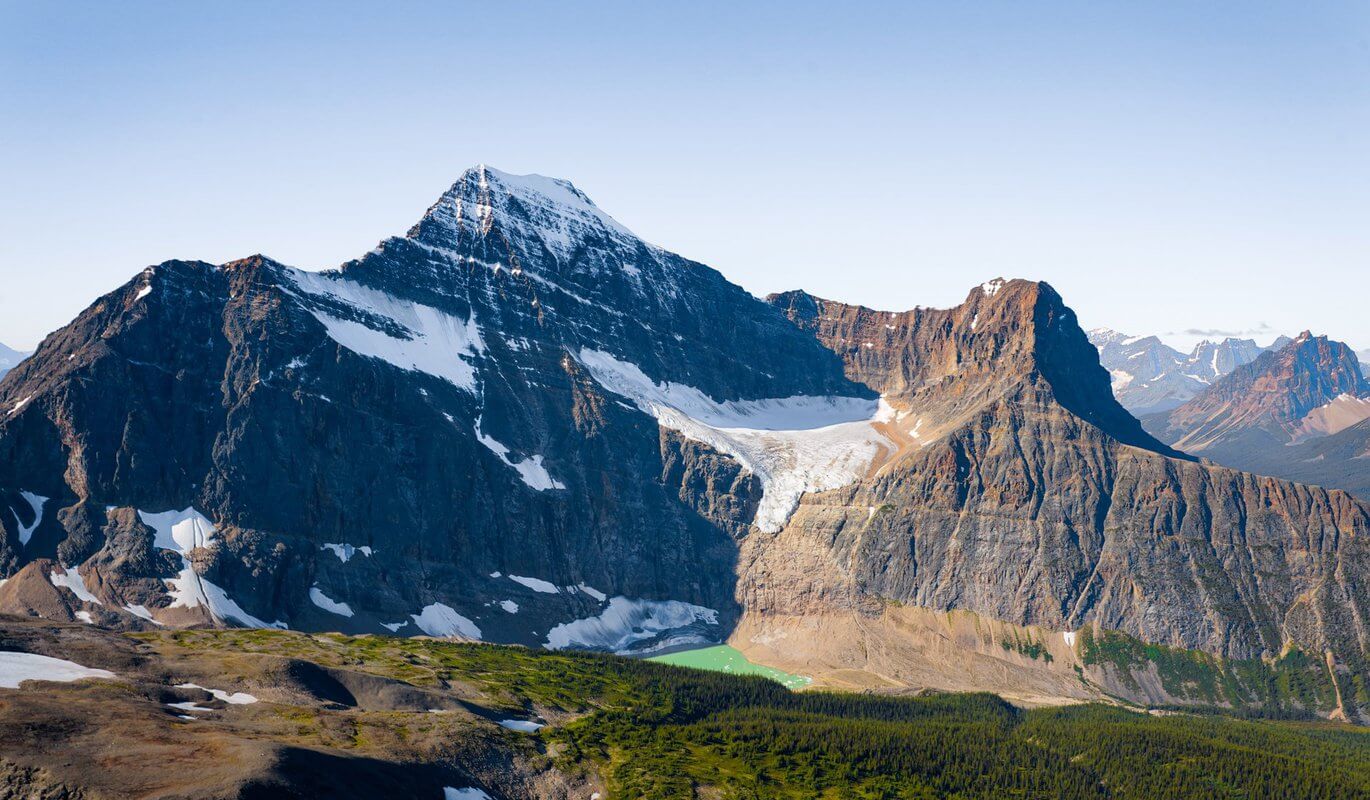
Mount Edith Cavell in Jasper National Park is a stunning example of the Canadian Rockies’ natural beauty. One of its highlights is the Angel Glacier, a striking ice formation that flows gracefully down the mountain. This beautiful blue glacier adds to the mountain’s charm and reminds visitors of the powerful forces of nature at work. There’s plenty to do here, whether you are hiking the Cavell Meadows Trail for sweeping views or looking for an adventure ice climbing near the glacier. Photographers love capturing how the light interacts with the ice and surrounding landscape, making Mount Edith Cavell a perfect spot to experience and photograph the Rockies in all their glory.
Athabasca Falls
Athabasca Falls’ power is breathtaking. A short hike along the canyon brings you close to the roaring falls, allowing you to feel their immense force and marvel at the stunning scenery. Along the trail, you will find plenty of great spots to snap photos, showcasing the falls’ energy and the rugged beauty of the surrounding landscape. One of the most exciting parts of the hike is crossing a bridge that stretches over the falls, giving you a thrilling view of the rushing water below. Athabasca Falls is an unforgettable stop for anyone visiting Jasper, combining natural beauty with a dash of adventure.
Miette Hot Springs
Miette Hot Springs is perfect for those looking for the healing benefits of natural mineral waters. The facility offers accessible changing rooms and rentals for swimsuits and towels, ensuring a hassle-free visit. With therapeutic temperatures ranging from 40 to 54 degrees Celsius, the springs provide the ideal way to relax after a day of exploring. Operating on a first-come, first-served basis, it’s a great spot to unwind, though busy days may have longer wait times. Be sure to check the seasonal hours before your visit. Whether you want to relax or enjoy the beautiful surroundings, Miette Hot Springs is a must-visit in Jasper National Park.
Ice Caves
The meltwater from nearby glaciers shapes Jasper’s stunning ice caves, filled with sparkling ice formations and incredible sculptures. For adventurous people, hiking the Ice Canyon Trail at Maligne Canyon is a must. Wear sturdy shoes and consider crampons for safety on the icy paths. A guided tour is highly recommended for safety and a deeper understanding of the caves’ geology and history. Visiting the ice caves offers breathtaking views and highlights climate change’s impact on glaciers. You’ll witness frozen waterfalls and intricate ice patterns, making each visit a unique and unforgettable experience.
Frozen Waterfalls
Jasper National Park undergoes a stunning transformation in winter, turning into a breathtaking wonderland filled with frozen waterfalls. As the temperatures drop, the gushing waters create beautiful ice formations, showcasing nature’s artistry. The winter months are the ideal time to experience this magical sight, with the waterfalls freezing into unique shapes and patterns. Among the park’s frozen gems, Athabasca Falls stands out with its impressive drop and powerful flow, while Tangle Falls enchants visitors with its delicate, shimmering cascades. Each waterfall has its own distinct charm, making it a must-see attraction. The contrast of the glistening ice against the rugged mountains creates an unforgettable scene, inviting everyone to appreciate the quiet beauty of winter in Jasper National Park.
Where to Camp and Stay Overnight at Jasper National Park?
If you are heading to Jasper National Park, plenty of overnight options suit every preference and budget. For luxury, the iconic Jasper Park Lodge offers stunning mountain views and a perfect blend of rustic charm and modern comforts. For a more central location, hotels like Forest Park put you close to local attractions and the community vibe.
Camping is a fantastic way for adventurous souls to connect with nature. The park offers various campsites, from fully equipped spots to peaceful, secluded backcountry areas. Be sure to book in advance, as reservations are usually required, and don’t forget your permits!
Camping fees vary, with basic sites starting at 16.75 CAD and more equipped spots going up to 50 CAD. For a budget-friendly option, free camping on nearby public lands is available.
Wildlife and Environment
Jasper National Park is teeming with wildlife, from grizzly bears and elk to moose and bighorn sheep, making it a true nature lover’s paradise. Recognised as a UNESCO World Heritage Site since 1984, this park is famous for its untouched landscapes, unique rock formations, and strong focus on conservation. Its stunning glaciers, turquoise lakes, and thick forests create an environment like no other.
Whether you are peering at the incredible Athabasca Glacier or venturing through its fascinating cave systems, Jasper offers endless options to experience nature at its finest. It is a must-visit for anyone who loves wildlife and wants to witness the beauty and importance of preserving our natural world.
A Closer Look at Jasper’s Climate
Jasper National Park’s climate shifts with the seasons, offering cold, snowy winters and pleasant, mild summers. The weather plays a big role in shaping your experience here. In the winter, temperatures can drop to as low as -25°C, creating a breathtaking snowy wonderland, though it can also limit some outdoor activities. The warmer weather is perfect for hiking and spotting wildlife in the summer. Spring and fall are especially beautiful, with blooming wildflowers in spring and bright autumn leaves making these seasons a favourite for many visitors.
How to Reach Jasper National Park
Jasper is located where Highway 16 (Yellowhead Highway) meets Highway 93 N (Icefields Parkway). From Edmonton, it is a straight 225-mile (362 kilometres) drive west on Highway 16, while from Calgary, it is 256 miles (412 kilometres) via Trans-Canada Highway 1 west to Lake Louise, then north on Highway 93. Both Edmonton and Calgary have well-connected international airports with several daily flights.
The most convenient way to reach Jasper is by renting a car at the airport, but you can also opt for a scenic rail journey with VIA Rail or the Rocky Mountaineer. Additionally, shuttle services operated by tour companies are also available.
Conclusion
So there you have it, folks! Jasper National Park is a playground for outdoor enthusiasts, offering a smorgasbord of adventures for everyone. Whether you have spent your days hiking through lush forests, paddling across turquoise lakes, or spotting wildlife in their natural habitat, Jasper has a way of leaving a lasting impression. The sheer variety of activities here, from the exhilarating to the peaceful, means there is always something new to discover, no matter the season.
Remember, the best way to experience Jasper is to get out there and explore it for yourself. So pack your bags, grab your hiking shoes, and let the adventure begin! And hey, if you have any other questions or recommendations, feel free to comment below. Let us keep the conversation going and share our Jasper experiences together. Happy exploring!
You May Also Read :
|
Guide To Accessible Parks in York |
|
|
Know The Tourist Attractions in Stanley Park |
|
|
All About Canada Wonderland |
|
|
Explore La Ronde Amusement Park |
|
|
Visit Banff National Park in Winters |
Frequently Asked Questions (FAQs)
How many days do you need in Jasper National Park?
You will want at least 3 to 4 days in Jasper National Park to explore the key highlights, including popular hikes, scenic drives, and wildlife viewing. If you are into outdoor activities like rafting or skiing, extending your stay to a week allows you to experience more of what the park offers.
What is the best month to go to Jasper?
September is the best month to visit Jasper. The weather is still pleasant, the summer crowds have thinned, and you will enjoy the stunning fall season and excellent wildlife opportunities.
What should you know before going to Jasper National Park?
Before visiting Jasper National Park, pack layers to prepare for unpredictable weather. Stay safe around abundant wildlife by keeping your distance and carrying bear spray. Plans for campsites and activities often require reservations, especially during peak seasons. Do not forget a park entry pass available online or at the gate. Lastly, follow Leave No Trace principles to help preserve the park for everyone.






